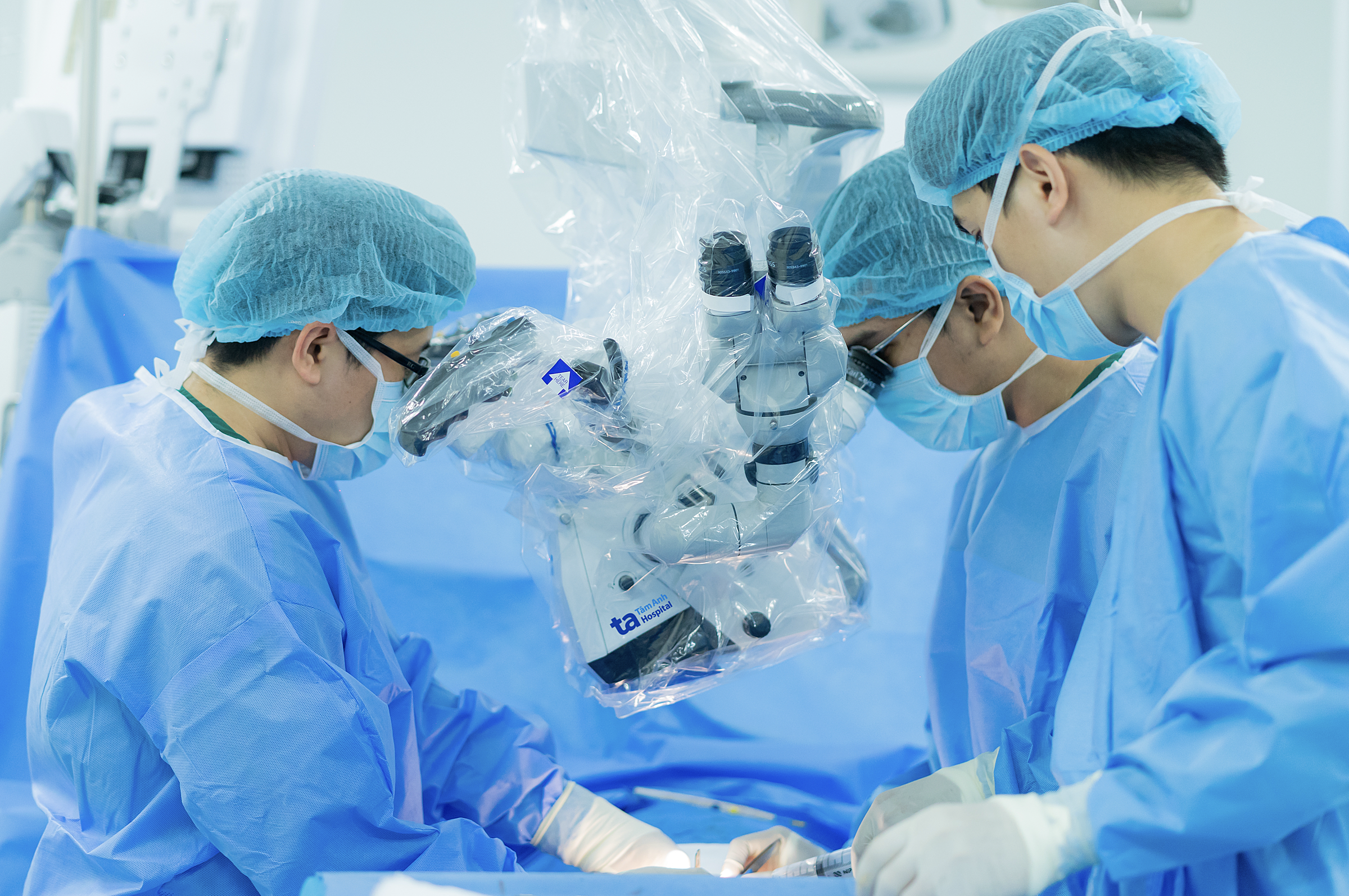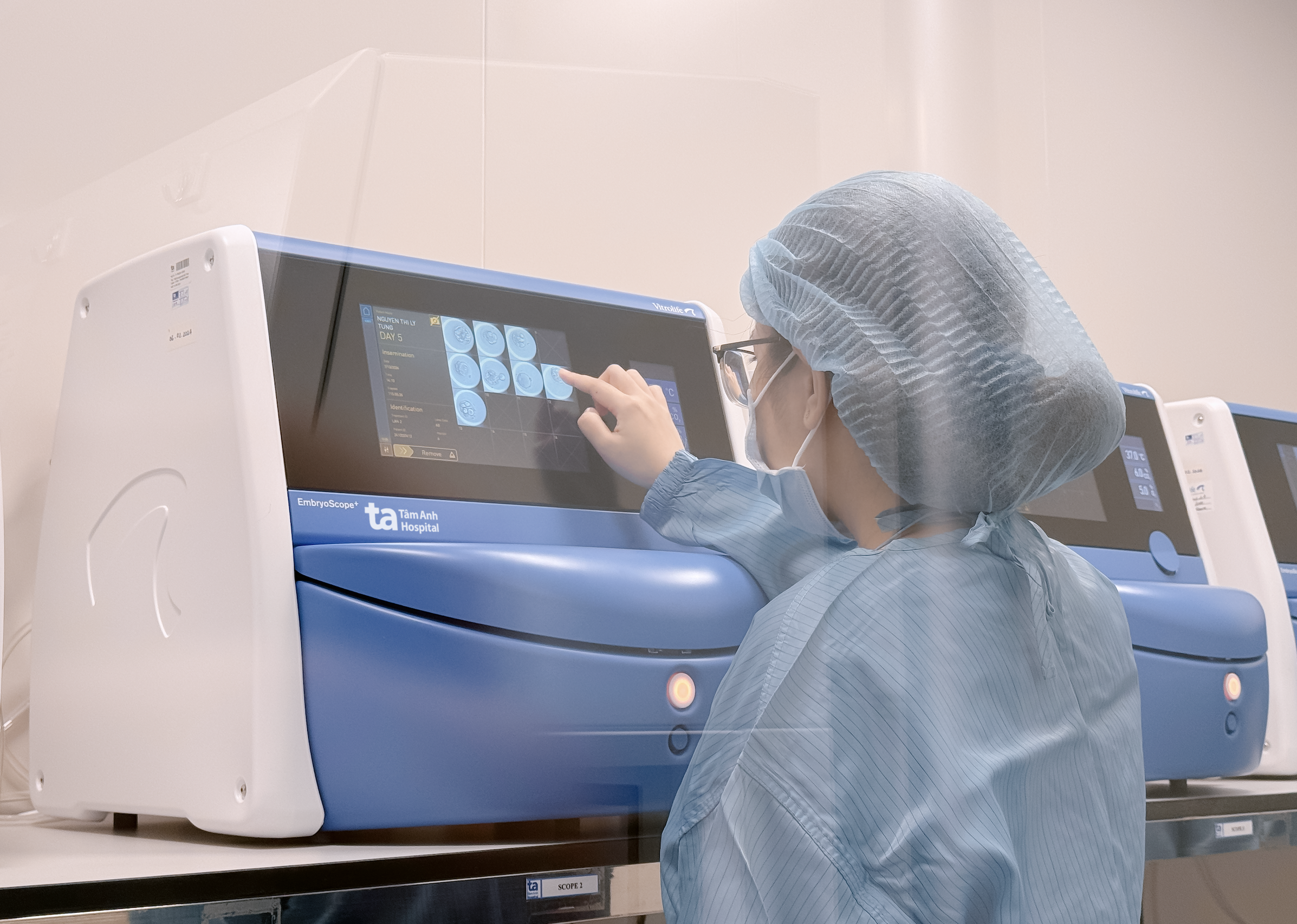At the Fertility Support Center, Tam Anh General Hospital (IVF Tam Anh TP HCM), Cuong's wife's reproductive health examination results were normal. However, Cuong was diagnosed with an AZFc deletion mutation on the Y chromosome, causing reduced sperm production. His left epididymis was swollen, suggesting a small amount of sperm remained, but it couldn't be released due to a blockage in the sperm duct. A semen analysis showed no sperm.
"I was shocked to have so many medical issues. Not seeking treatment for so many years prevented my wife from getting pregnant," Cuong said.
Dr. Duong Quang Huy, Head of Andrology, and his team performed surgery to retrieve sperm for in vitro fertilization (IVF). In Cuong's left sperm duct, the lower end leading into the testicle was clear, and sperm was present. However, the upper part of the duct leading outwards was blocked over a long section. The right sperm duct was clear, but there was no sperm due to testicular damage. The surgeons performed a microsurgical cross-connection of the left sperm duct to the right, allowing sperm to flow from the left testicle, improving Cuong’s physiological and sexual function.
 |
Dr. Duong Quang Huy (left) and the surgical team perform a microsurgical cross-connection of the sperm duct. Photo: Hoai Thuong |
Dr. Duong Quang Huy (left) and the surgical team perform a microsurgical cross-connection of the sperm duct. Photo: Hoai Thuong
The 90-minute microsurgery yielded two sperm samples from the semen flowing out of the connected duct. One sample was used for IVF, creating 4 day-5 embryos.
Doctors are currently developing a treatment plan to prepare Cuong’s wife's uterine lining for embryo transfer and pregnancy.
According to Dr. Huy, Cuong's AZFc deletion mutation has no treatment and carries the risk of declining sperm production until it ceases completely. Cuong's long-term work as a fruit tree farmer, with frequent exposure to pesticides, further increased the risk to his reproductive health. Therefore, the remaining sperm sample was cryopreserved to allow the couple the possibility of having more children in the future.
 |
An embryologist observes embryo development through the incubator system. Photo: Phuong Trinh |
An embryologist observes embryo development through the incubator system. Photo: Phuong Trinh
Dr. Huy noted that male infertility accounts for about 40% of infertility cases, equal to female infertility. Couples who have been trying to conceive for a year without success should seek comprehensive medical examinations to determine the cause and receive timely treatment. Men who are not yet married or are delaying having children should not ignore any unusual symptoms in their reproductive system, such as pain, swelling, redness, erectile dysfunction, ejaculatory disorders, or decreased libido. Those working with or exposed to hazardous chemicals or radiation should also proactively seek early examinations and consider sperm cryopreservation if necessary.
At IVF Tam Anh, men with no sperm are treated with various methods: sperm duct reconstruction, testicular sperm extraction (TESE), or micro-TESE. These procedures increase the chances of having biological children and improve physiological health.
Hoai Thuong
*The patient's name has been changed.












